Display all 20 images
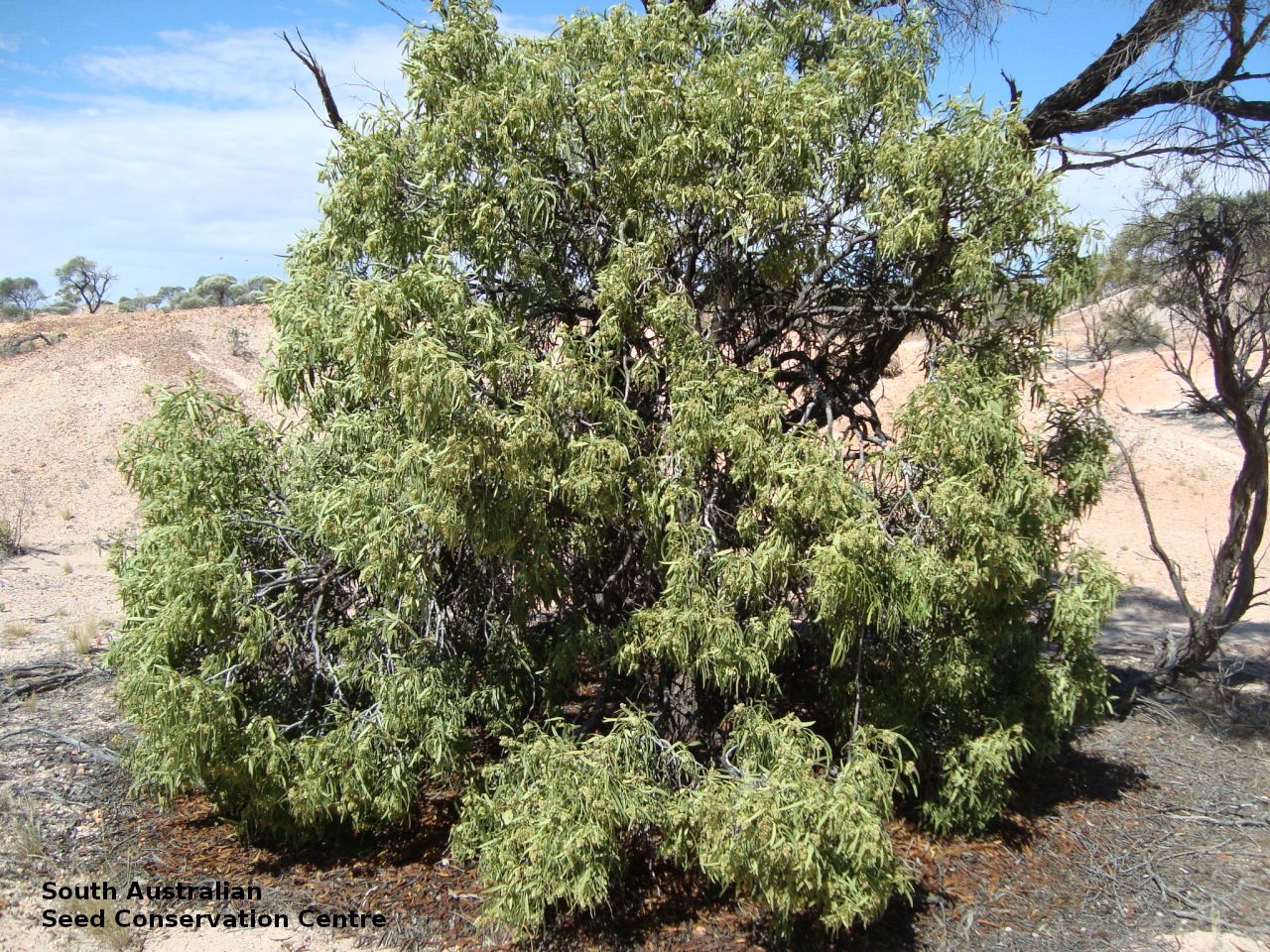
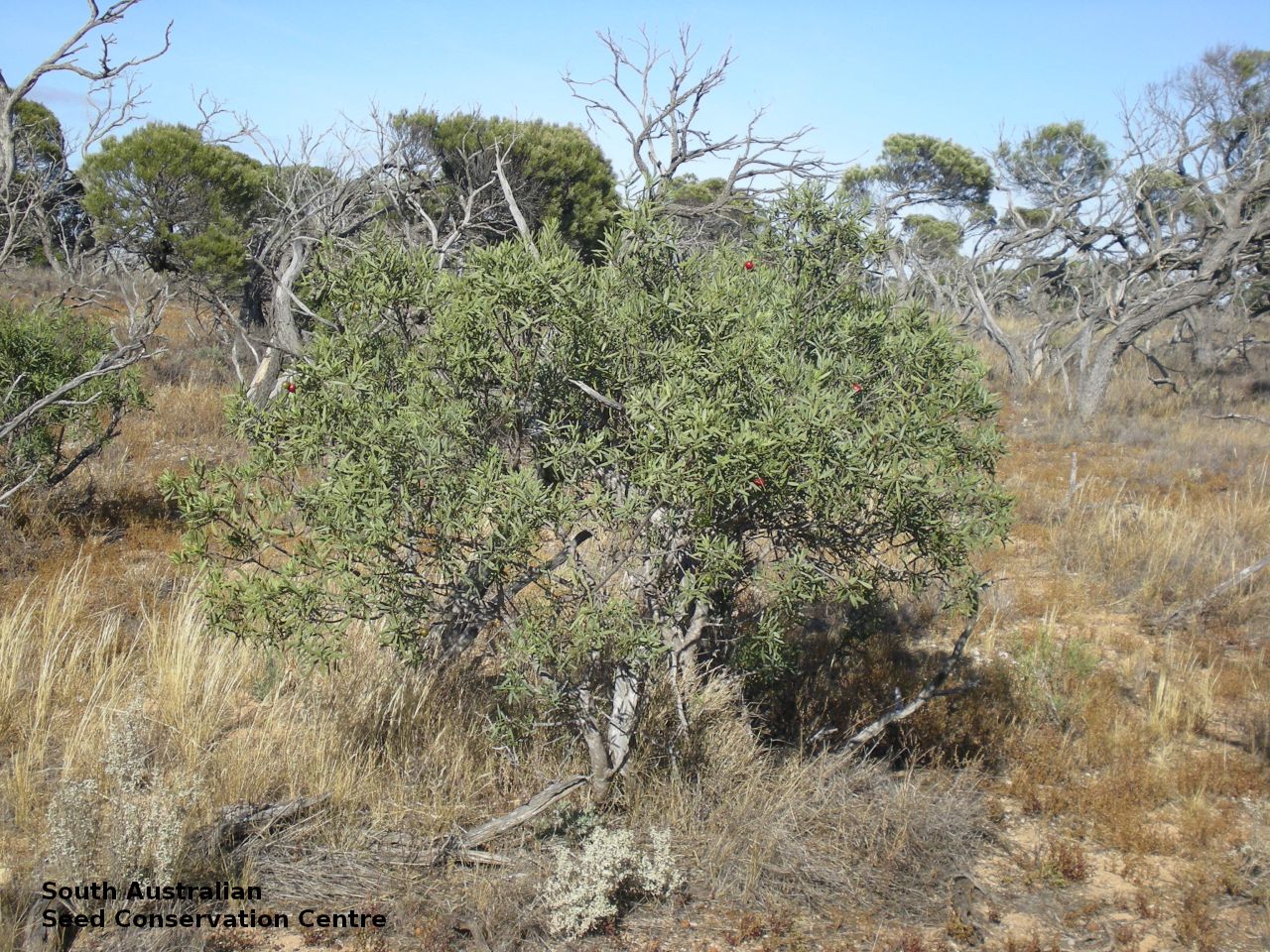
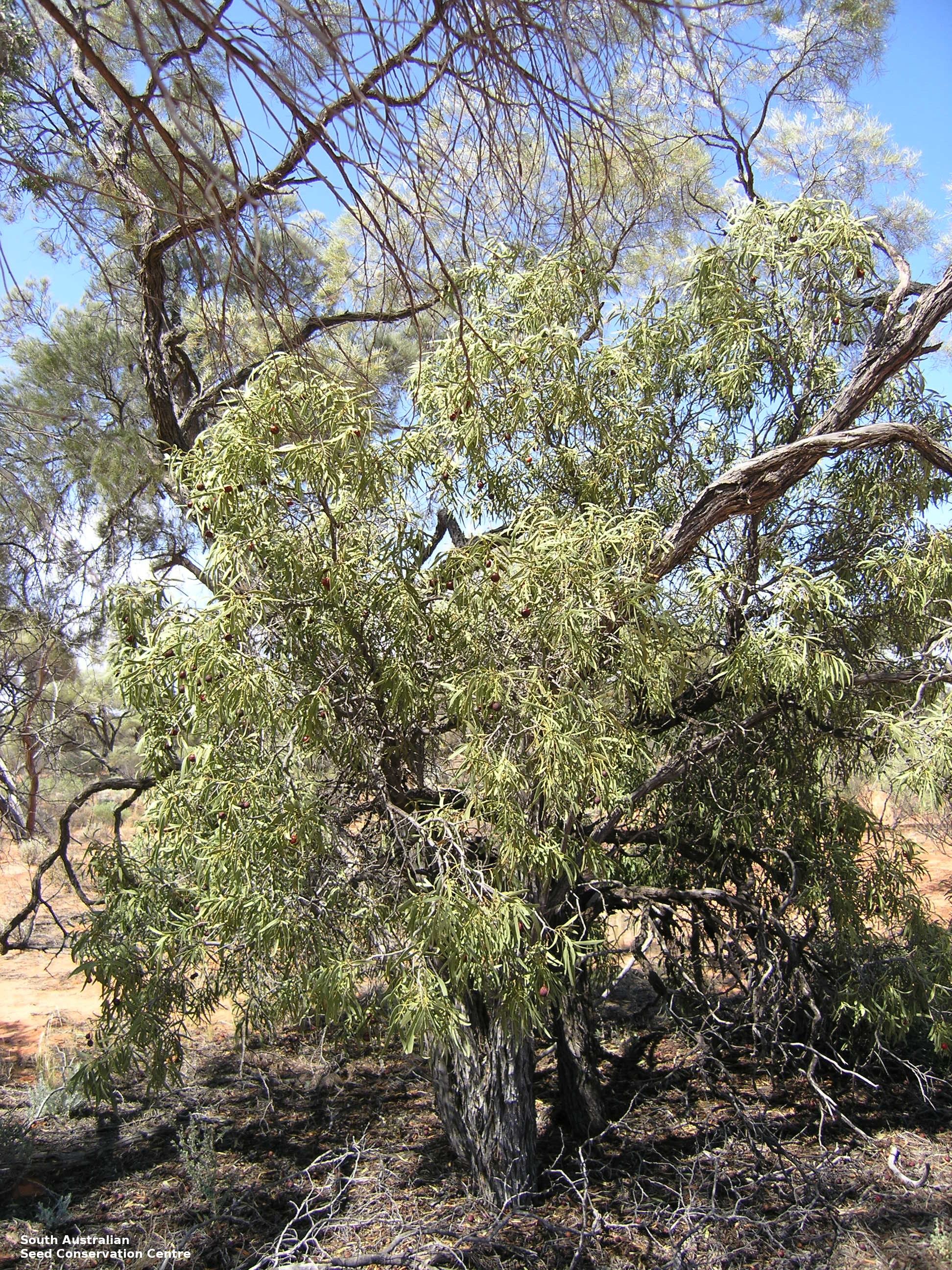
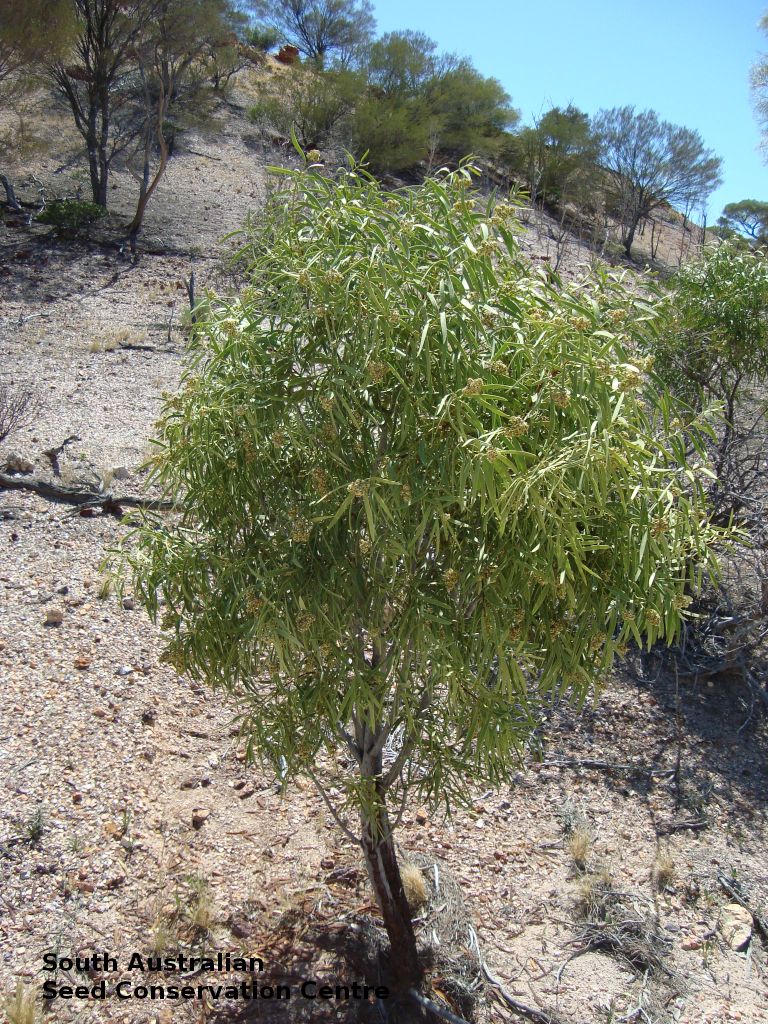
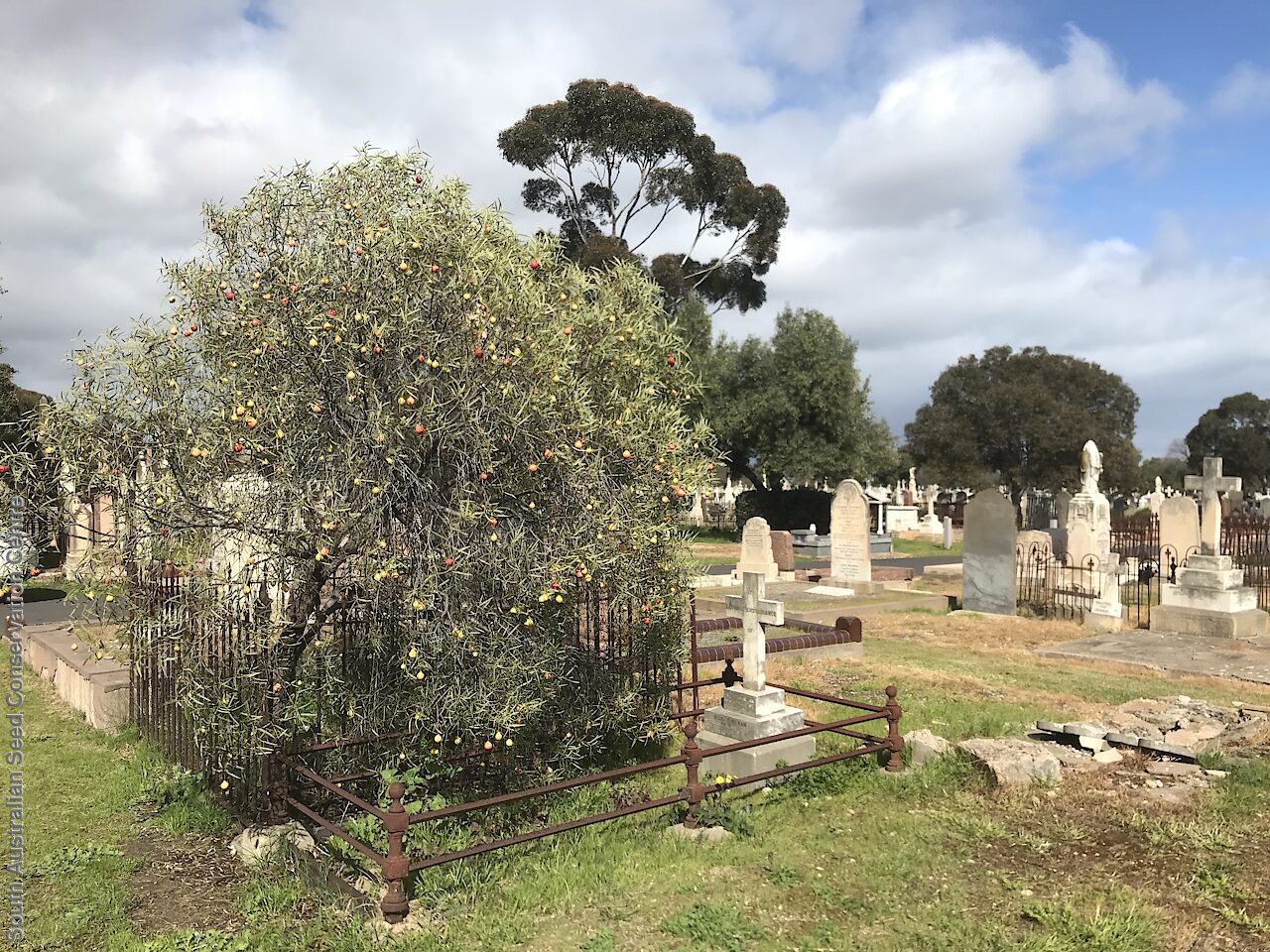
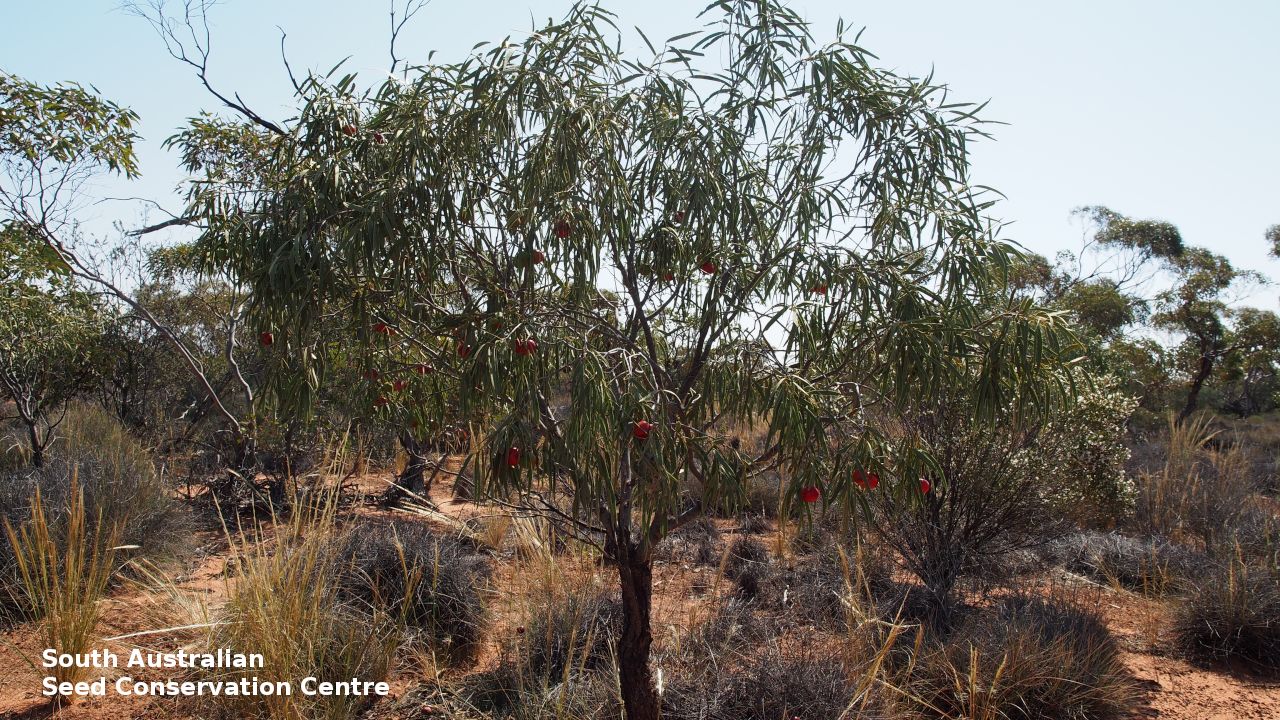
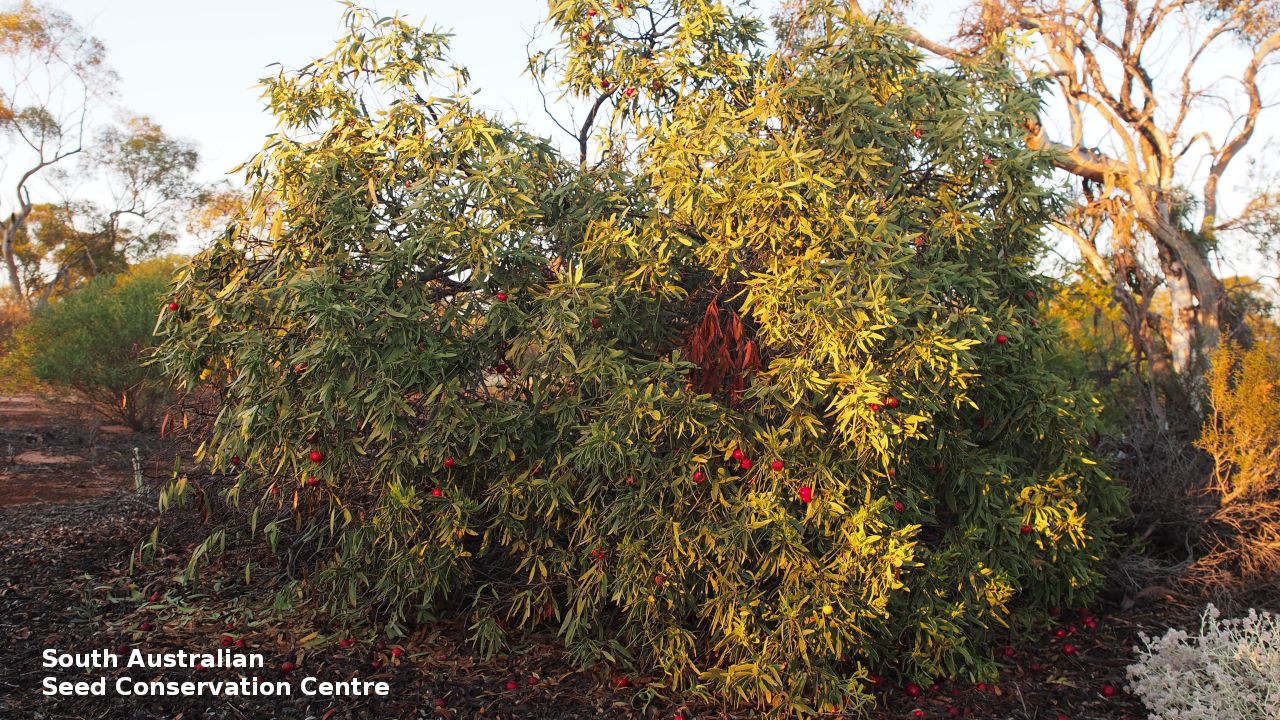
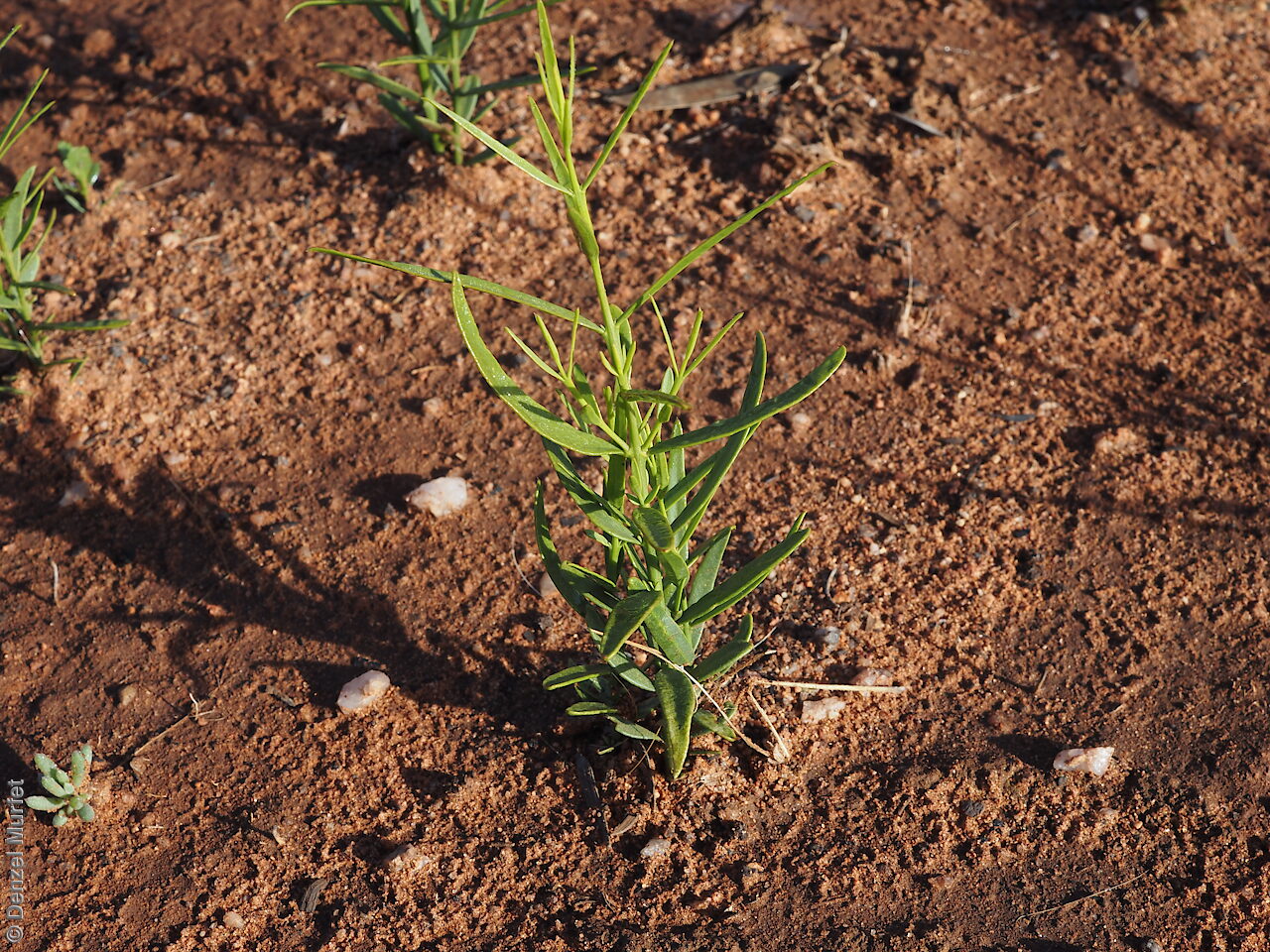
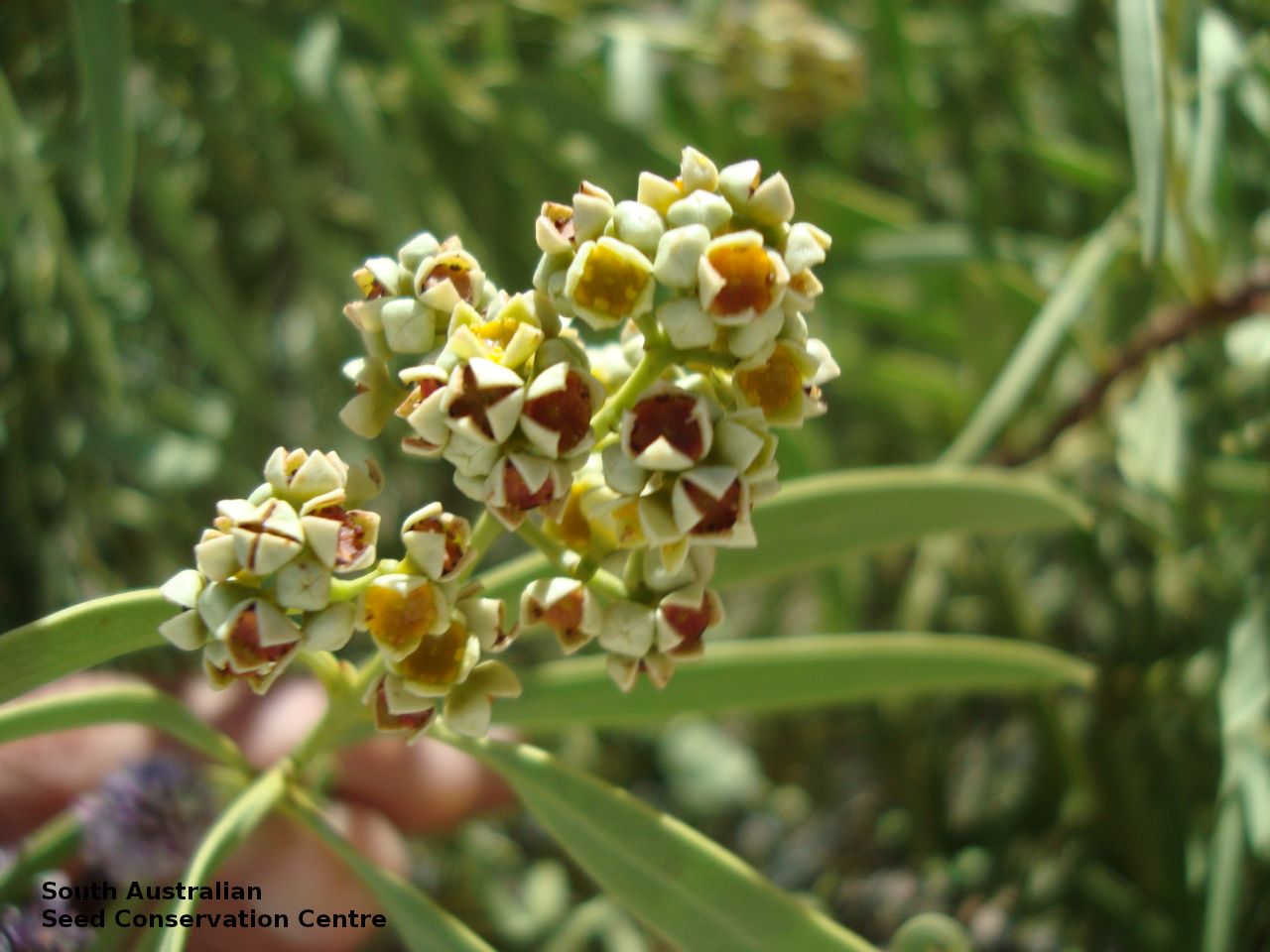
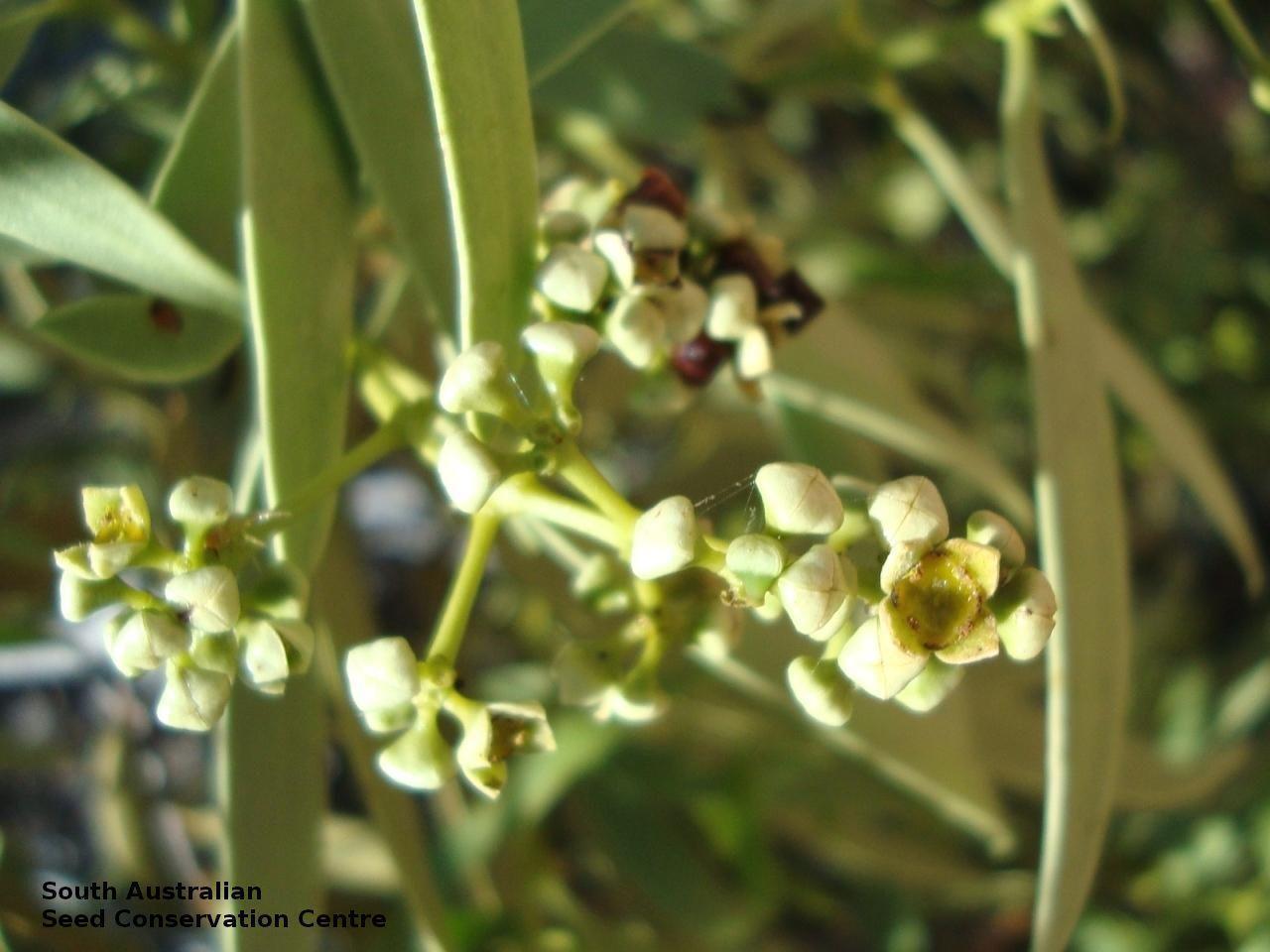
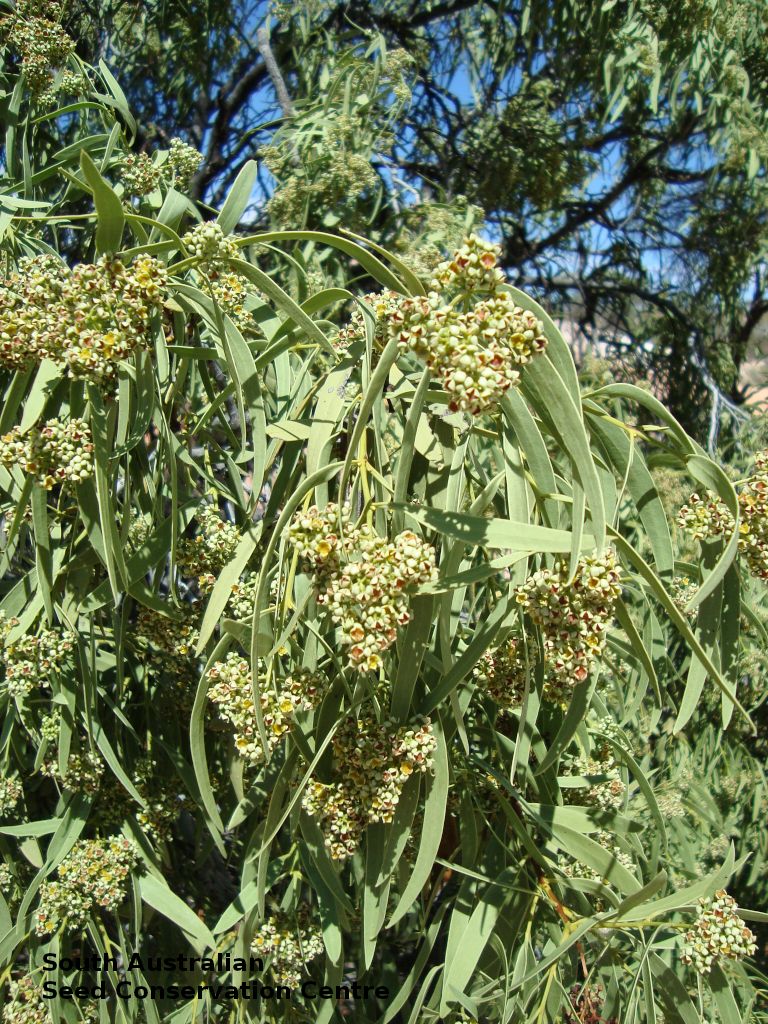
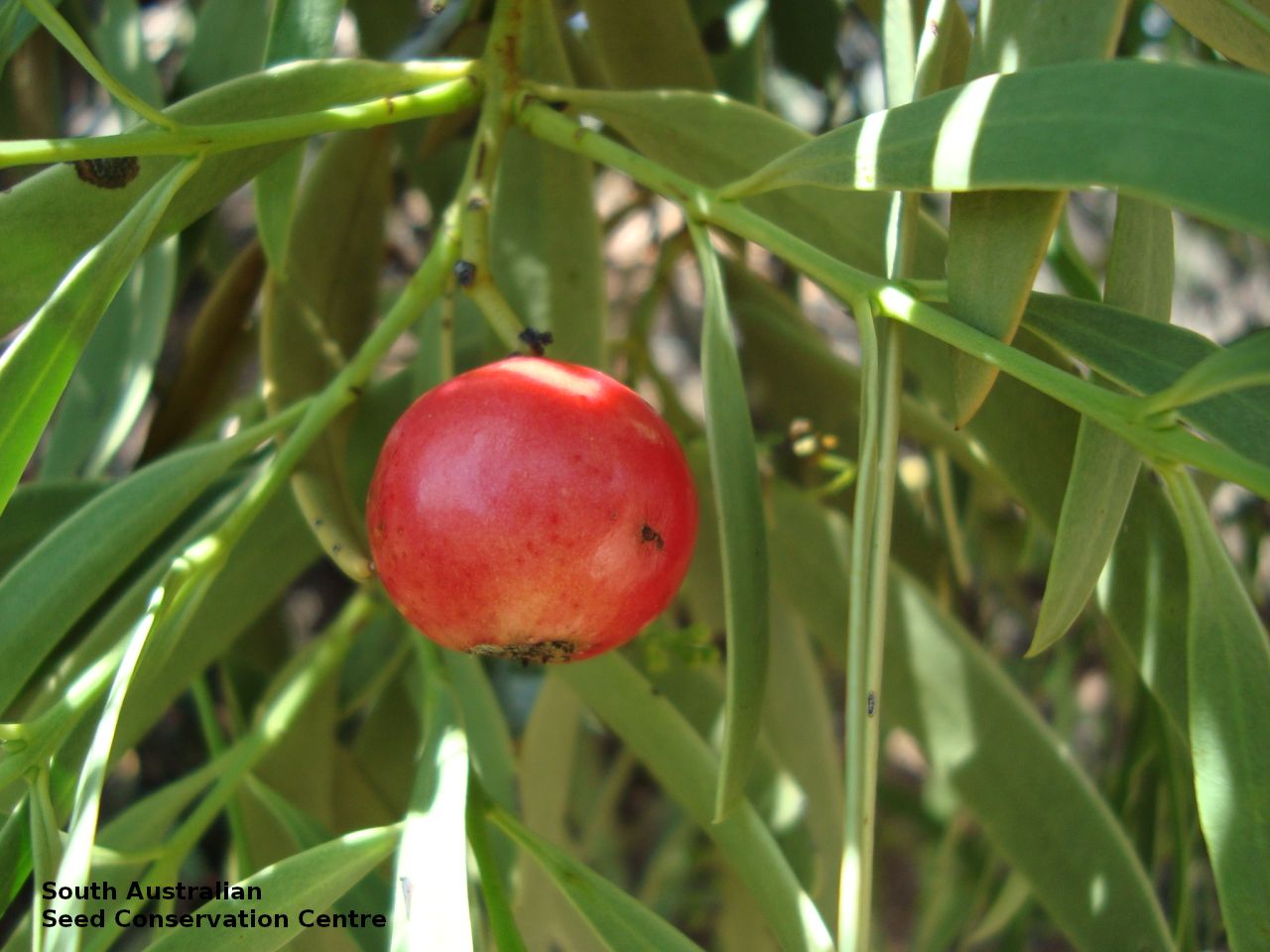
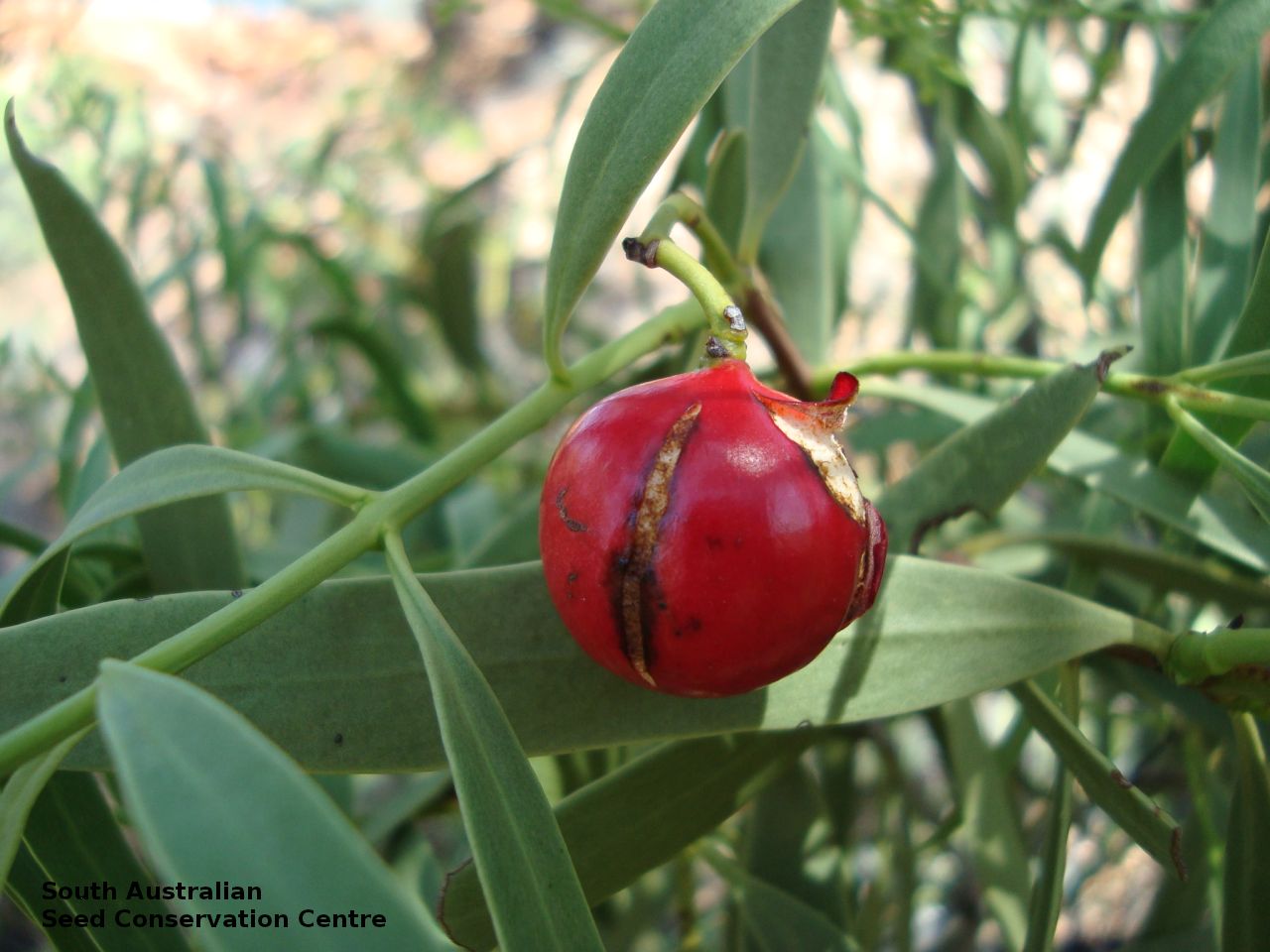
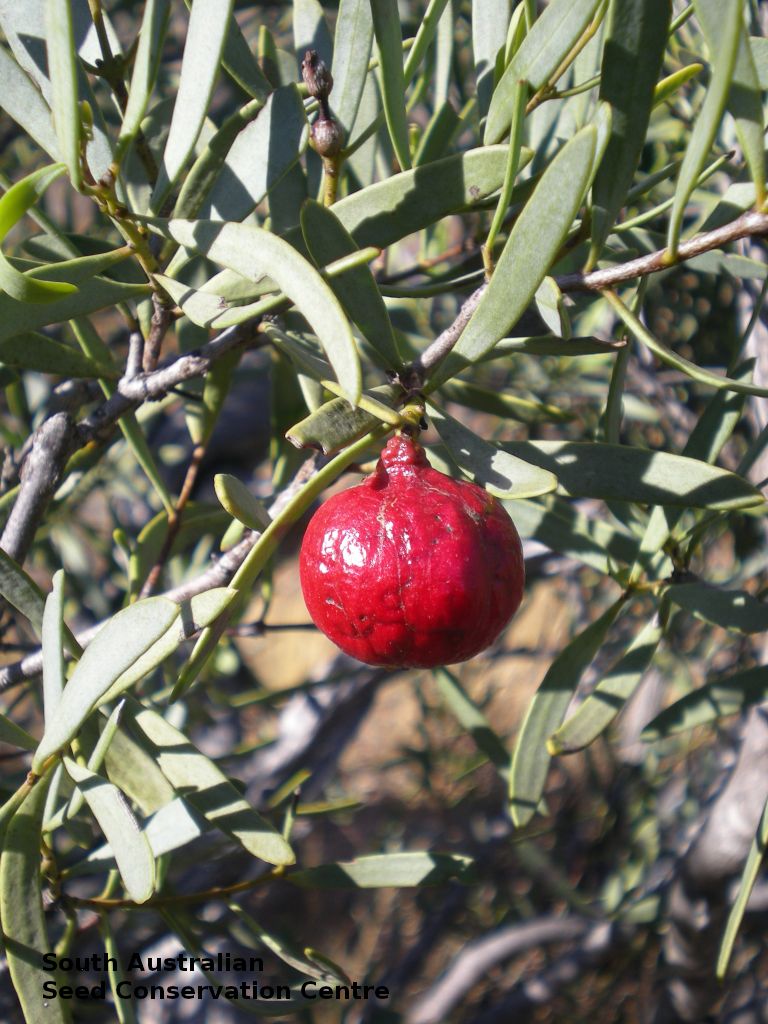
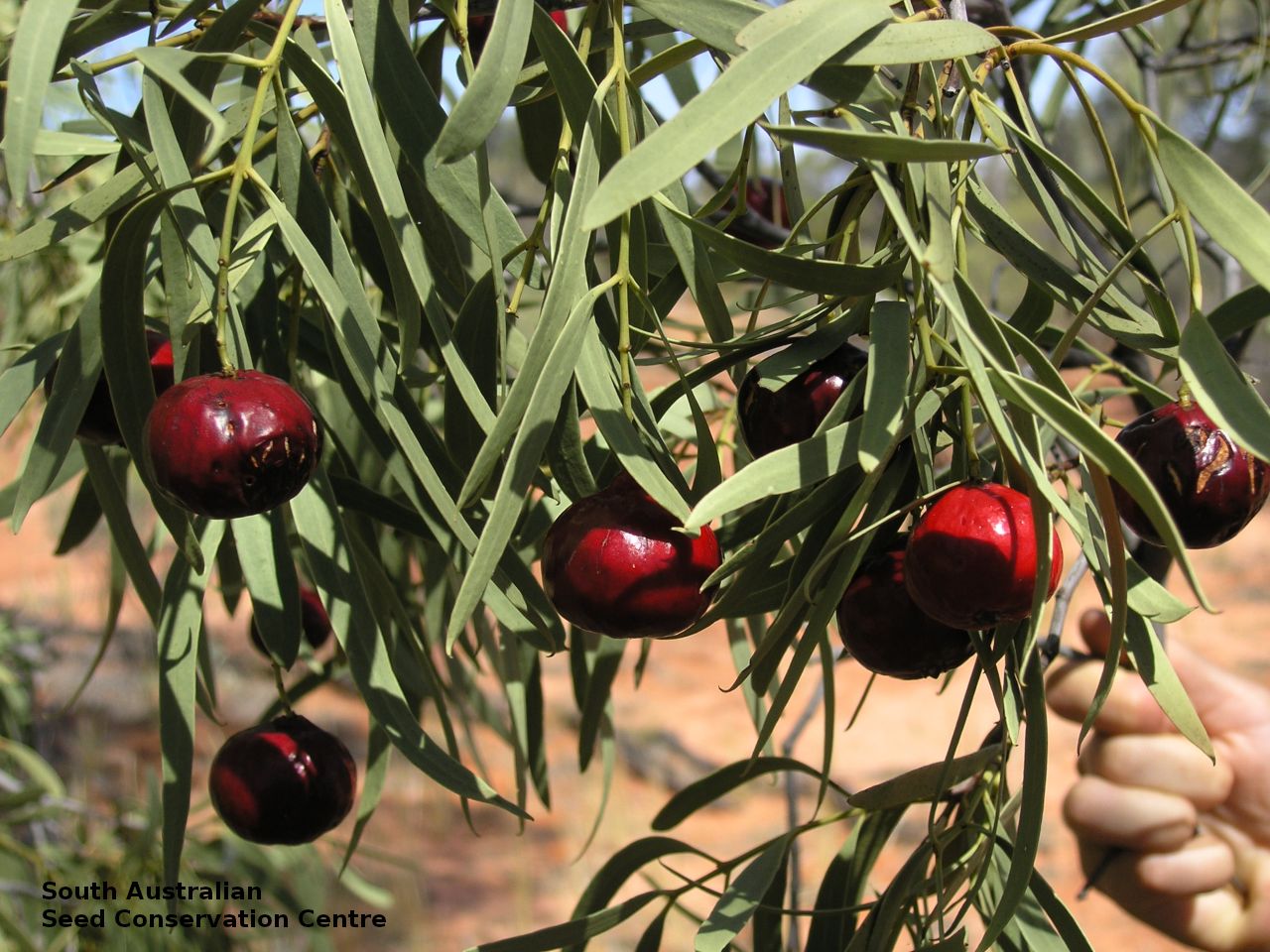
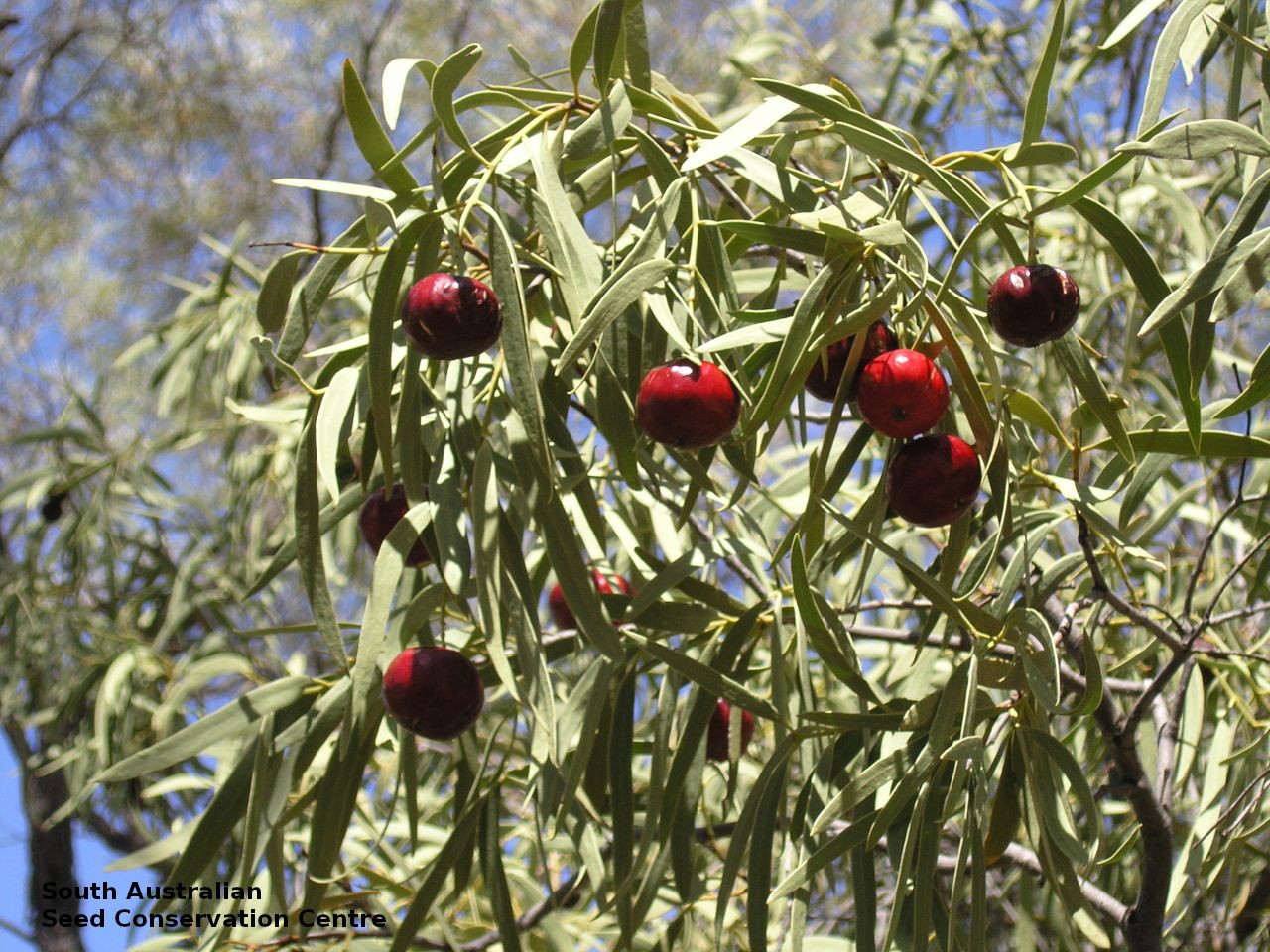
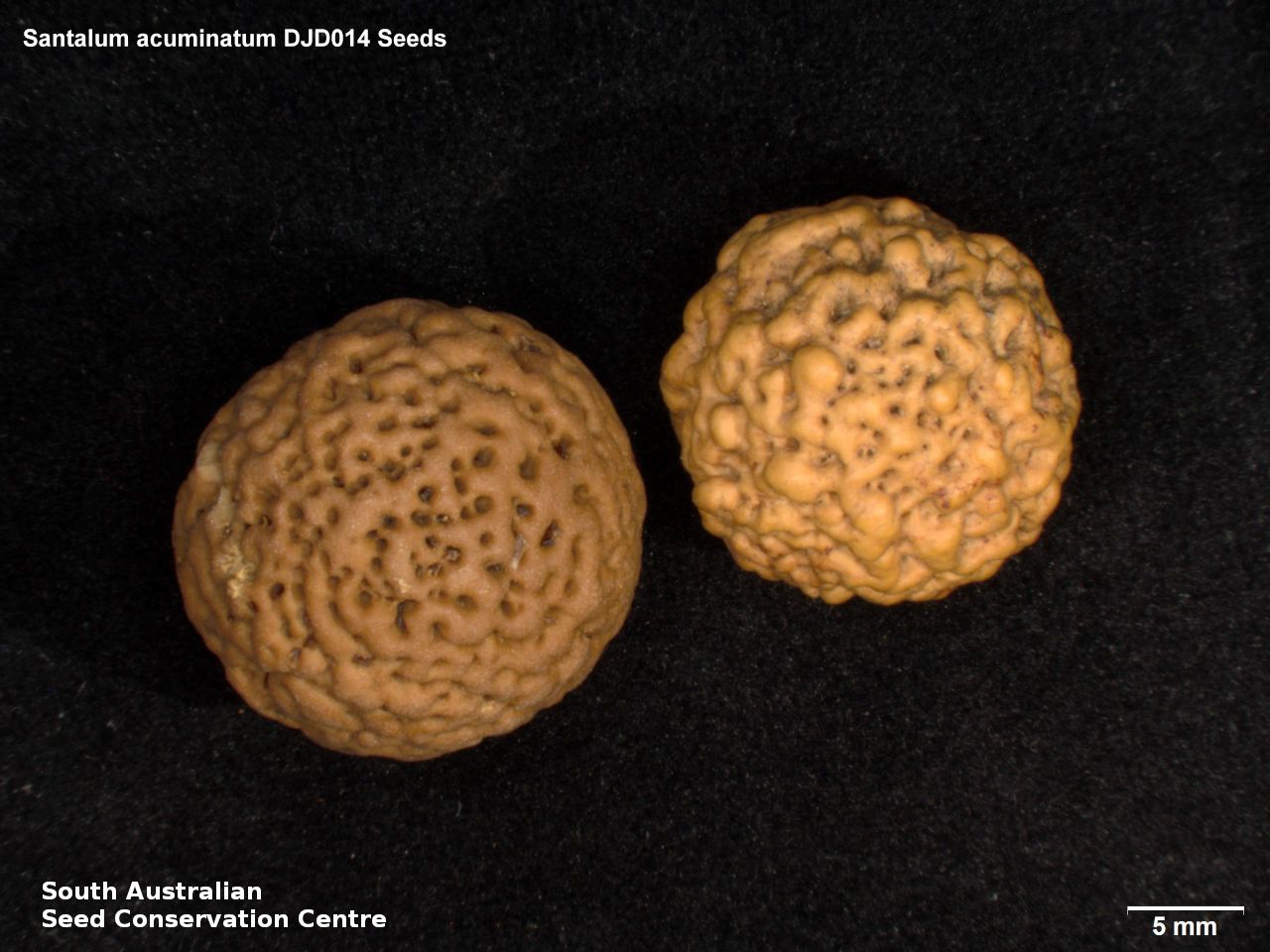
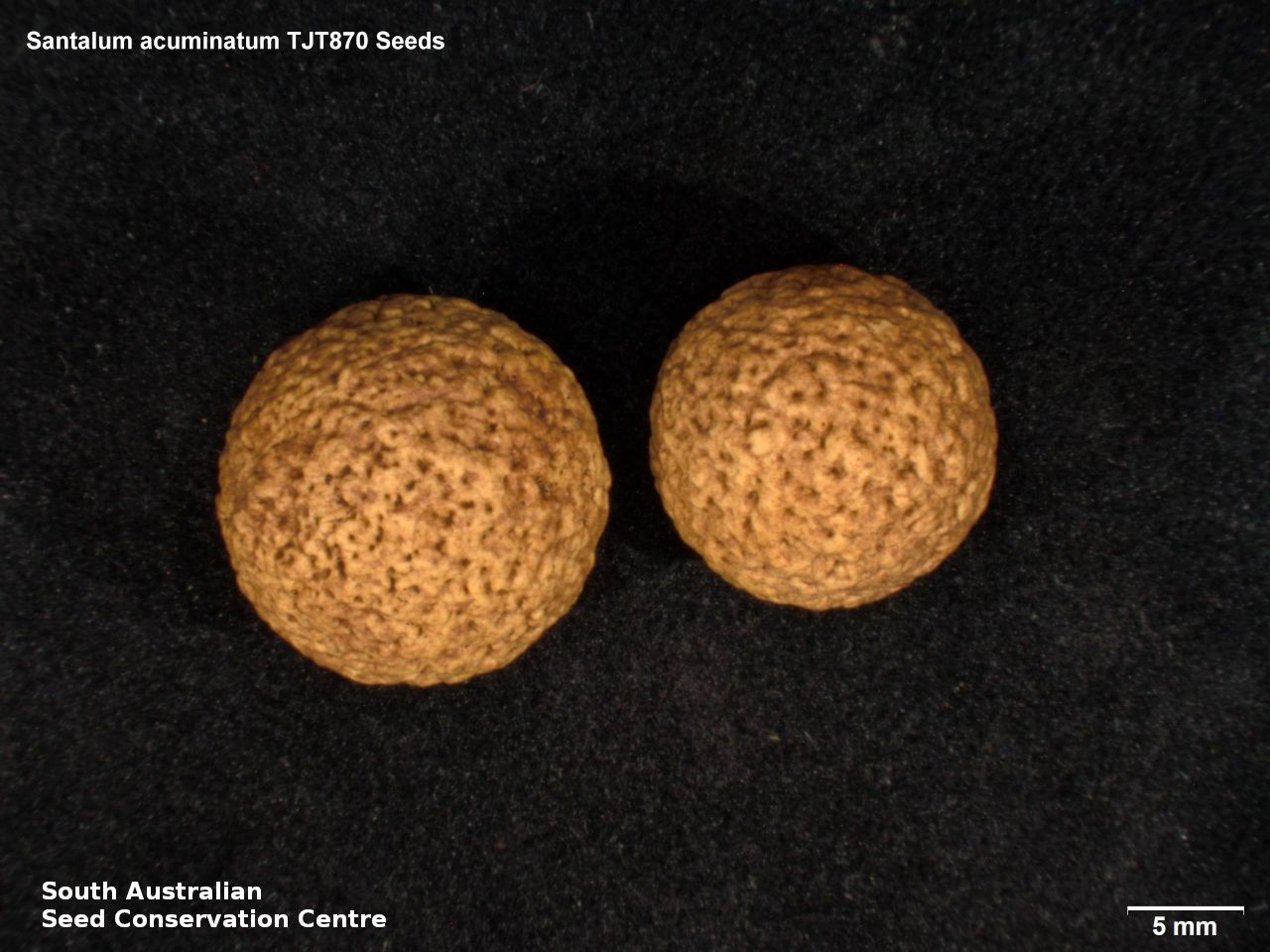
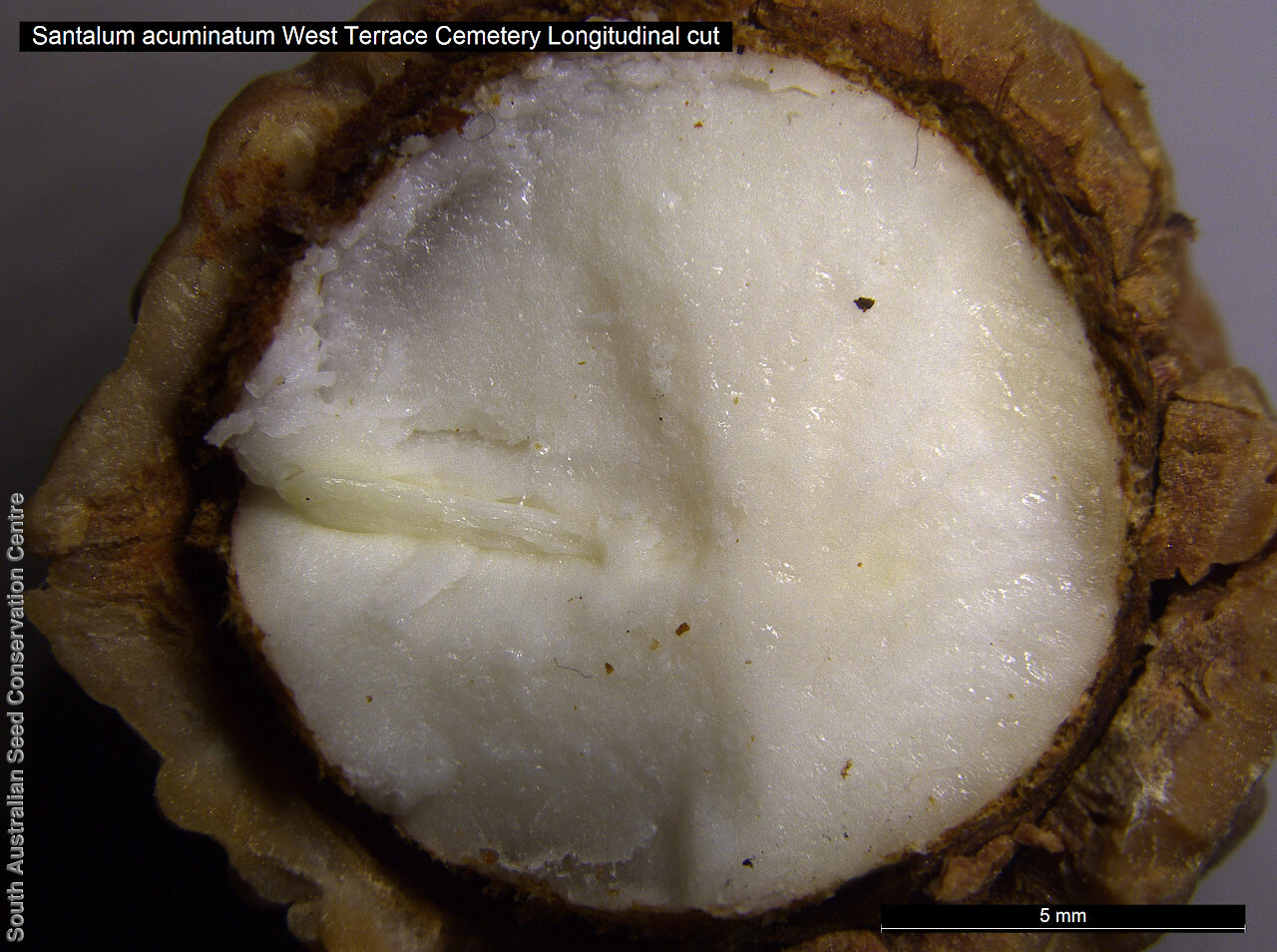
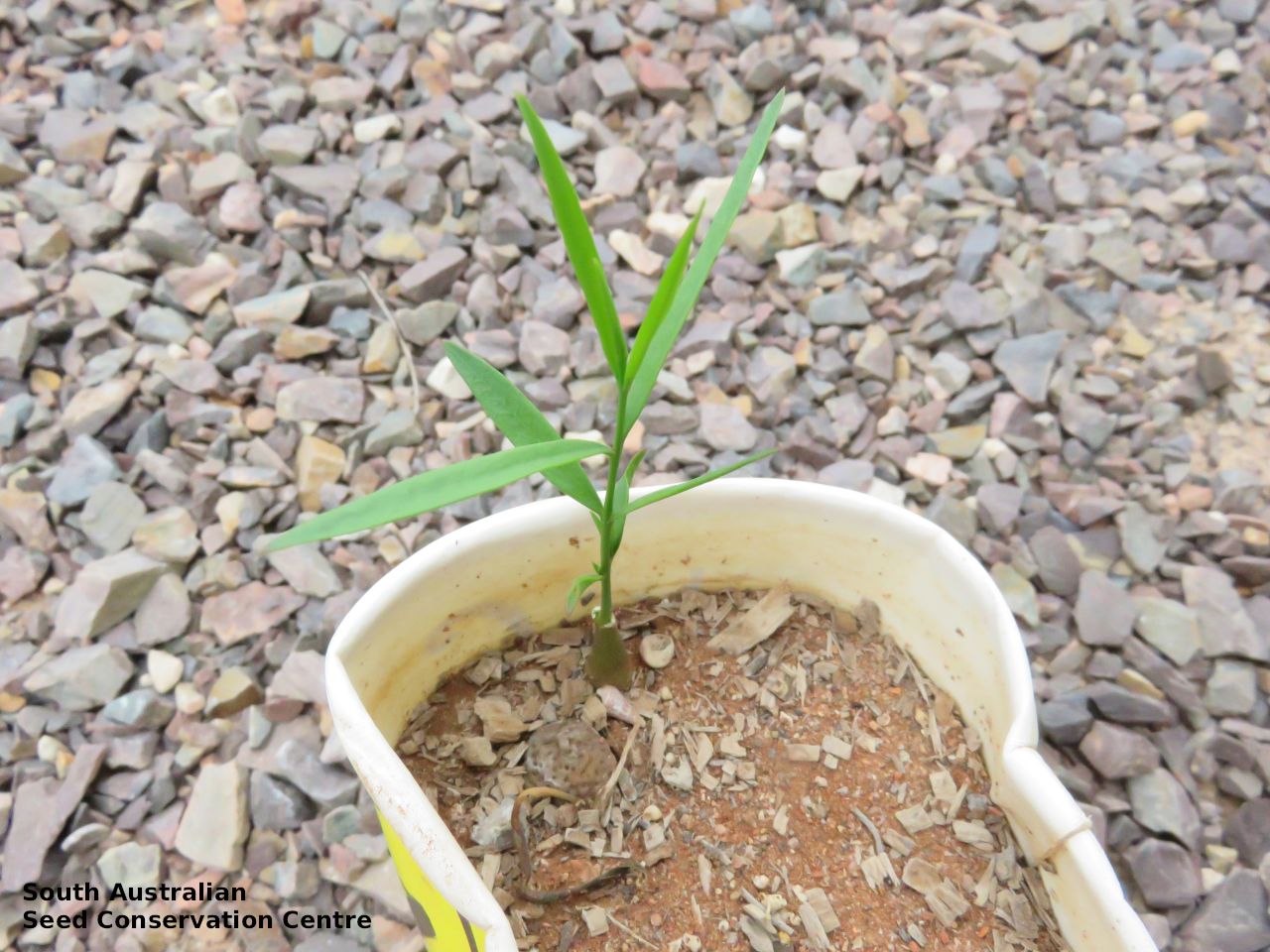
Regional Species Conservation Assessments per IBRA subregion.

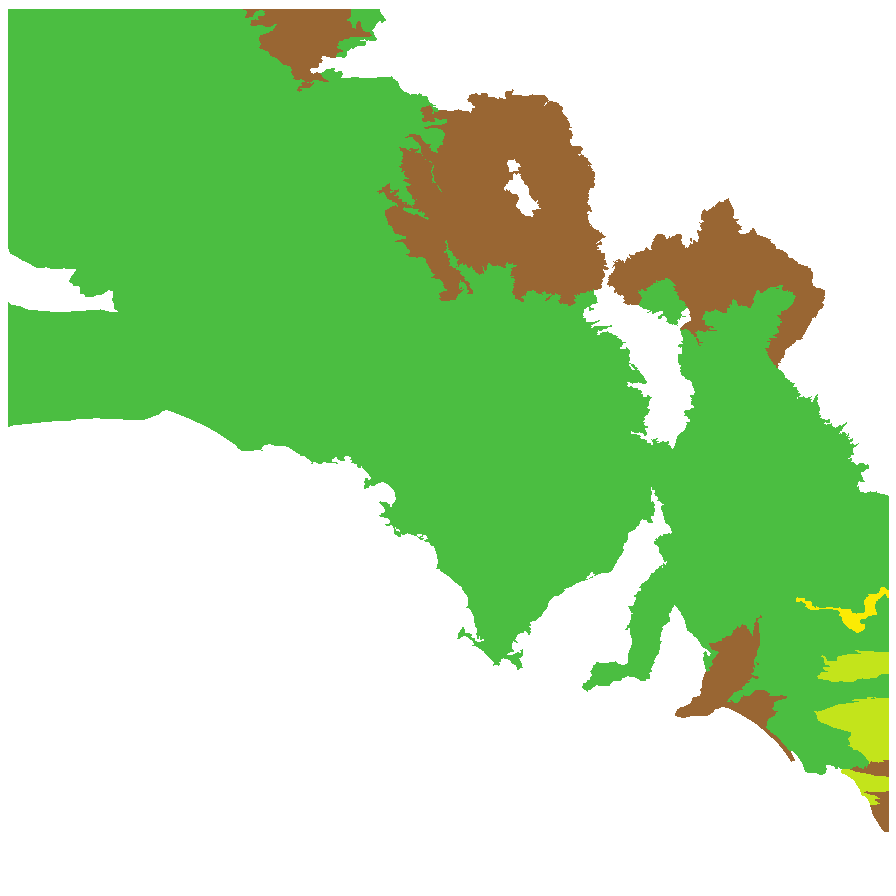
Least concern
Near threatened
Rare
Vulnerable
Endangered
Critically endangered
Extinct
Data deficient
Adelaide
Arkaroola
Ceduna
Coober Pedy
Hawker
Innamincka
Marla
Marree
Mount Gambier
Oodnadatta
Renmark
Wudinna
Keith
Yunta
Display IBRA region text
| Tintinara (NCP04) | Naracoorte Coastal Plain | Least Concern |
| Fleurieu (KAN02) | Kanmantoo | Rare (IUCN: RA d(ii)) (Probable Decline) [declining due to small pops & low recruitment; no fruit seen; suckers] |
| Mount Lofty Ranges (FLB01) | Flinders Lofty Block | Rare (IUCN: RA d(ii)) (Probable Decline) [well collected; declining due to small pops & low recruitment; no fruit seen; suckers] |
| Broughton (FLB02) | | Least Concern |
| Olary Spur (FLB03) | | Least Concern |
| Southern Flinders (FLB04) | | Least Concern |
| Northern Flinders (FLB05) | | Least Concern |
| Central Flinders (FLB06) | | Least Concern |
| Southern Yorke (EYB01) | Eyre Yorke Block | Least Concern |
| St Vincent (EYB02) | | Least Concern |
| Eyre Hills (EYB03) | | Least Concern |
| Talia (EYB04) | | Least Concern |
| Eyre Mallee (EYB05) | | Least Concern |
| South Olary Plain (MDD01) | Murray Darling Depression | Least Concern (Probable Decline) [goats a threat] |
| Murray Mallee (MDD02) | | Least Concern |
| Murray Lakes and Coorong (MDD03) | | Rare (IUCN: RA d(ii)) (Probable Decline) |
| Lowan Mallee (MDD04) | | Near Threatened |
| Wimmera (MDD05) | | Rare (IUCN: RA d(i,ii)) [edge of range] |
| Braemer (MDD07) | | Least Concern |
| Murray Scroll Belt (RIV06) | Riverina | Vulnerable (IUCN: VU B2ab(i,ii,iii)) (Probable Decline) [limited habitat ] |
| Myall Plains (GAW01) | Gawler | Least Concern |
| Gawler Volcanics (GAW02) | | Least Concern |
| Gawler Lakes (GAW03) | | Least Concern |
| Arcoona Plateau (GAW04) | | Least Concern |
| Kingoonya (GAW05) | | Least Concern |
| Roxby (GAW07) | | Least Concern |
| Commonwealth Hill (GAW08) | | Least Concern |
| Maralinga (GVD03) | Great Victoria Desert | Least Concern |
| Kintore (GVD04) | | Least Concern |
| Tallaringa (GVD05) | | Least Concern |
| Yellabinna (GVD06) | | Least Concern |
| Nullarbor Plain (NUL02) | Nullarbor | Least Concern |
| Yalata (NUL03) | | Least Concern |
| Hampton (HAM01) | Hampton | Least Concern |
| Bimbowrie (BHC05) | Broken Hill Complex | Least Concern |
| Curnamona (BHC06) | | Least Concern |
| Warriner (SSD04) | Simpson Strzelecki Dunefields | Rare (IUCN: RA d(i,ii)) |
| Breakaways (STP01) | Stony Plains | Least Concern |
| Oodnadatta (STP02) | | Rare (IUCN: RA d(ii)) [edge of range] |
| Murnpeowie (STP03) | | Rare (IUCN: RA d(ii)) [edge of range] |
| Baltana (STP07) | | Rare (IUCN: RA d(i,ii)) [edge of range] |
| Mann-Musgrave Block (CER01) | Central Ranges | Least Concern |
| Watarru (CER02) | | Least Concern |
| Everard Block (CER03) | | Least Concern |
| Tieyon (FIN03) | Finke | Rare (IUCN: RA d(i,ii)) [edge of range] |
| Tintinara (NCP04) | Naracoorte Coastal Plain | Least Concern |
| Fleurieu (KAN02) | Kanmantoo | Rare (IUCN: RA d(ii)) (Probable Decline) [declining due to small pops & low recruitment; no fruit seen; suckers] |
| 6 of 6 subregions | Flinders Lofty Block | Least Concern , Rare |
| 5 of 5 subregions | Eyre Yorke Block | Least Concern |
| 6 of 6 subregions | Murray Darling Depression | Least Concern , Near Threatened , Rare |
| Murray Scroll Belt (RIV06) | Riverina | Vulnerable (IUCN: VU B2ab(i,ii,iii)) (Probable Decline) [limited habitat ] |
| 7 of 8 subregions | Gawler | Least Concern |
| 4 of 4 subregions | Great Victoria Desert | Least Concern |
| 2 of 3 subregions | Nullarbor | Least Concern |
| Hampton (HAM01) | Hampton | Least Concern |
| 2 of 4 subregions | Broken Hill Complex | Least Concern |
| Warriner (SSD04) | Simpson Strzelecki Dunefields | Rare (IUCN: RA d(i,ii)) |
| 4 of 7 subregions | Stony Plains | Least Concern , Rare |
| 3 of 3 subregions | Central Ranges | Least Concern |
| Tieyon (FIN03) | Finke | Rare (IUCN: RA d(i,ii)) [edge of range] |
Botanical art
Kath Alcock paintings: 34
Prior names
Mida acuminata
Fusanus acuminatus
Eucarya acuminata
Common names
Quandong
Native Peach
Etymology
Santalum from the Greek santalon, which is derived from the Sanskrit chandana meaning fragrant, named for the Indian sandalwood. Acuminatum means tapering to a long point.
Distribution and status
Found scattered across all regions of South Australia except Kangaroo Island. Also occurs in Western Australia, Northern territory, Queensland, New South Wales and Victoria. Common in South Australia. Common interstate.
Herbarium regions: North Western, Lake Eyre, Nullarbor, Gairdner-Torrens, Flinders Ranges, Eastern, Eyre Peninsula, Northern Lofty, Murray, Yorke Peninsula, Southern Lofty, South Eastern, Green Adelaide
NRM regions: Adelaide and Mount Lofty Ranges, Alinytjara Wilurara, Eyre Peninsula, Northern and Yorke, South Australian Arid Lands, South Australian Murray-Darling Basin, South East
AVH map: SA distribution map (external link)
Plant description
Tall shrub or small tree to 5m high and semi-parasitic on other plants. Leaves are thick, leathery and olive green, arranged in pairs. Flowers are cream in pyramid clusters at the end of stems. Flowering can occur all year round. Fruits are round fruit with a thin layer of edible red flesh, to 3cm across. Seeds are hard round woody seed to 2.5cm across with a deep wrinkled surface.
Seed collection and propagation
Collect seeds between January and December. Fruits can be collected off the plant or from the ground under the plant. Collect fruits which are red with a hard seed inside. Clean the fruit as soon as possible because the flesh will be hard to remove once it has dried. When soft, the flesh can be easily peeled off the seed. Store the seeds with a desiccant such as dried silica beads or dry rice, in an air tight container in a cool and dry place. From one collection, the seed viability was high, at 100%. This species has physiological dormancy that need to be overcome for the seed to germinate (e.g. nicking the seed coat).
| Location | No. of seeds
(weight grams) | Number
of plants | Date
collected | Collection number
Collection location | Date
stored | % Viability | Storage
temperature | | BGA | 335 (659.15 g) | | 14-Oct-2004 | DJD14
Yorke Peninsula | 28-Mar-2006 | 72% | -18°C |
BGA
MSB | 1,700 (3912 g)
1,700 (3912 g) | 100 | 27-Oct-2004 | MOL4630
Gairdner-Torrens | 28-Mar-2006 | 100% | -18°C |
| BGA | 130 (373.01 g) | 15 | 4-Nov-2009 | Bordervillage
Nullarbor | 1-Jun-2010 | N/C | -18°C |
| BGA | 270 (786.57 g) | 15 | 5-Nov-2009 | TST870
Nullarbor | 1-Jun-2010 | N/C | -18°C |
| BGA | 2,000 (4,660 g) | | 27-Nov-2013 | KHB828
Flinders Ranges | 1-Nov-2017 | | -18°C |
Location: BGA — the seeds are stored at the Adelaide Botanic Gardens, MSB — the seeds are stored at the Millennium Seed Bank, Kew, England.
Number of plants: This is the number of plants from which the seeds were collected.
Collection location: The Herbarium of South Australia's region name.
% Viability: Percentage of filled healthy seeds determined by a cut test or x-ray.
Germination table:
Display




















